How toxic is my Tempurpedic brand mattress? Toxicants found include Arsenic (94 ppm), Antimony (98 ppm) & Lead (9 ppm).
Introduction (for those new to this website):
Tamara Rubin is an independent advocate for consumer goods safety. She is also a mother of Lead-poisoned children. She began testing consumer goods for toxicants in 2009 and was the parent-advocate responsible for finding Lead in the popular fidget spinner toys in 2017. Tamara uses XRF testing (a scientific method used by the U.S. Consumer Product Safety Commission) to test consumer goods for metallic toxicants, including Lead, Cadmium, Mercury and Arsenic.
How toxic is a Tempurpedic mattress?
(from a neurotoxic metals perspective)
When tested with an XRF instrument, the Tempurpedic king mattress pictured in this post (purchased new in Oregon back in April of 2006) was positive for as much as:
- 9 ppm Lead (Pb)
- 98 ppm Antimony (Sb) – and –
- 94 ppm Arsenic (As)
- Note: (ppm = parts per million)
Please scroll down to the bottom of the post to see the full XRF readings for each component tested.
The amount of Lead that is considered toxic (and illegal, and unsafe) in items manufactured “for use by children” is anything 90 ppm Lead (or higher) in the paint, glaze or coating of an item, or anything 100 ppm Lead (or higher) in the substrate. Antimony and Arsenic are not typically regulated (for total XRF-detectable content in consumer goods not specifically intended for use by children). Consequently, this mattress would be considered “safe” by all current regulatory standards (even standards not typically applied to items like mattresses intended for use by adults.) BUT (and it’s a big “but”!)….
Why is it a problem if there is a trace level of Lead (or Antimony?, or Arsenic?) in my mattress? Here are my concerns:
- Micro-particulate inhalation: While sleeping you are likely breathing in any airborne particulates (micro-dust) created over the lifetime of your mattress. Not only is this micro dust in and around your mattress (in your bedroom) but with the forced air heating one finds in most homes it is likely also spread around your house at trace levels. Scientist also agree that exposure to even trace levels of toxicants in dust is potentially a much greater concern than exposure to those same levels of toxicants in a consumer good that is not likely to create dust (for example Arsenic bound in a plastic toy would present a less significant hazard given the use and function of the toy – when used as intended – as compared to a mattress, here’s a link to a specific example.) While “the dose makes the poison” is a popular phrase, all public agencies agree there is no safe level of Lead exposure, and in this case – the “exposure pathway” is possibly a more significant factor than the “dose”.
- Transdermal absorption: In addition to inhalation concerns, there is also the potential for transdermal (= through the skin) absorption of toxicants given the nature of the intended use of mattresses. I am sure this has not yet been studied (specifically the exposure concern with the trace toxicant levels I have been finding in most standard mattresses), however if you find any relevant studies I can link here, please let me know.
- Lead, Arsenic & Antimony: The specific cocktail of toxicants found in the fabric and memory foam of this Tempurpedic brand mattress are especially concerning. Given the known separate potential impacts of each of these toxicants on human health (especially if they become airborne in household dust over time and could be inhaled) the potential impact of the three combined is even more concerning. Scientists have studied this and demonstrated that (in most cases) combined toxicant exposure has a greater impact than one would expect from adding up each of the exposure impacts separately. So in this case if one randomly assigns the “impact of exposure to one single chemical” a numerical value of “1”, 1+1+1 might equal 4 (or 5), not 3. This is referred to by epidemiologists as the impact of “confounding factors” whereby the presence of one chemical (let’s say Arsenic) actually might generate additional health impairments or increased health impacts in the presence of another chemical (for example Antimony and/or Lead), additional beyond the impacts that one might expect from adding together all of the anticipated impacts from each of the chemicals acting alone.
- Anticipated duration of use: You use these products (very expensive mattresses – the one pictured cost about $4,000 new, 14 years ago!) typically for more than a decade. A multi-thousand-dollar mattress is generally used by most families as long as possible given it is regarded as an “investment” in one’s health. 14 years ago, we bought our Tempurpedic mattresses on a payment plan to make it possible for us to afford them! So if toxicants are present at concerning levels, potential low level (chronic) exposure could persist over a decade or more (possibly as long as two decades… how long have you had your mattress?)
- Normal anticipated wear/deterioration: Mattresses, by their very nature, deteriorate into the environment over time (generating micro-dust in the process.) This is especially true of these memory foam type mattresses.
- Fabric deteriorates too: Fabric elements (including zip-on mattress covers) also deteriorate and wear over time and are seldom washed, especially given how tricky they are to remove and reinstall on these large memory foam mattresses. Please check out the image below of the “pilling” and large-form dust found under the mattress cover when it was unzipped.This is the visible particulate matter that has been “shed” from the integrated zip-on mattress cover of the mattress pictured here, and just gives an indicator of how much invisible micro particulate matter may have been shed.
- Potential for Bioaccumulation: Based on my [more than a decade of] experience doing this work, I would speculate (an educated guess) that these toxicants will likely be found in the blood (or hair or urine) of the user, especially given the fact that many folks sleep in their bed naked — constituting a large potential exposure area (especially if – after some formalized study has been conducted – transdermal exposure turns out to be a significant concern.) This is especially a concern with Tempurpedic mattresses as I understand that it is not normal to use a mattress pad or other zip on cover with this brand and style of mattress – as (in fact) it may void the product warranty. Instead (specifically with Tempurpedic at least) the user is encouraged to simply have a sheet between them and the mattress. In our case, the irony is that we have opted for organic cotton sheets (making dust transference much more likely!) As this was my husband’s mattress, I am going to have him get a full metals panel to help determine if this has impacted his health at all. I will report back on that when I have more information.
- No one is studying this as a concern: To my knowledge no one is studying the impact of potential long-term chronic exposure to trace levels of toxicants one might find in a modern mattress. Just because it is not being studied does not mean it is not a problem, but the casual reader here on this blog (perhaps someone new to this issue) might readily dismiss the potential concern for these findings simply because it has not been studied. As post-industrial humans we have learned over and over again that in the realm of toxicant exposure, “lack of study” is not equal to “safe.”
- There are many non-toxic mattress options available today: Given the known potential health impacts of the chemicals found, combined with the lack of research in this area, one really needs to adhere to the principle of “first do no harm.” Why choose (or stick with) a mattress with Arsenic when you can choose a safer option (when it comes time to upgrade or replace your current mattress)? If you cannot afford a new organic fiber or “all-natural” material mattress at this time, perhaps consider getting an organic mattress cover (or mattress topper) if that is within your budget, as that will at least put a more significant barrier between you and the chemicals in your bed (more significant that an organic cotton sheet!)
Conclusion…
(+ alternatives to potentially toxic mattresses!)
As a result of these and other concerns, I have begun the switch to mattresses made from organic, all-natural-materials (organic wool, organic cotton, natural latex); for my family I have chosen Naturepedic mattresses, but there are many brands out there to choose from these days (as awareness of toxicants in consumer goods has become more prevalent the organic mattress marketplace has seen exponential growth.) While this post was not written to be a “plug” for Naturepedic, I have been a fan of Naturepedic products for about 7 years now and, in 2019, I asked Naturepedic to become an affiliated sponsor of my work; they are now offering a discount to my readers, and send me a percentage with every mattress purchased through my link. Click here for more information about that discount. Here’s my direct Naturepedic affiliate link: http://shrsl.com/1y8l6 (and please continue reading below for additional information about this mattress and the related concerns!)
Image below is dust & debris found between mattress and mattress cover. Please continue reading below the image!
 How much Antimony is “too much” Antimony?
How much Antimony is “too much” Antimony?
At this point, I don’t believe there is a known answer yet to this question. To my knowledge, there is currently no U.S. regulatory standard limiting Antimony in bedding (mattresses, pillows, blankets, mattress pads, etc.) or stuffed animals. Said another way, trace Antimony in the fabric and stuffing of bedding and stuffed animals (in the range of 50 to 300 ppm – as I have been finding frequently in people’s belongings across the country) is considered completely “legal” — as it is not in any way restricted or limited.
It is my understanding that the reason this is legal and not regulated is solely a result of the fact that potential human health impacts of chronic exposure to low levels of Antimony – pervasive in personal possessions that we use every day – has not been specifically/sufficiently studied (as of the time of publishing this blog post – January, 2020). If you have any information that contradicts/updates this (and especially if you know of a study that quantifies or qualifies the potential implications of chronic daily exposure to low levels of Antimony in consumer goods), please let me know.
To read more specifics about the concern for Antimony (and other toxicants) in bedding, click here.
To see more posts I have written about bedding with Antimony, click here.
To learn more about the discount Naturepedic is offering for Lead Safe Mama readers on purchases of new organic mattresses and pillows (etc.), click here.
FULL XRF READING SET FOR MATTRESS PICTURED
Below are the exact XRF readings for the Tempurpedic mattress pictured here. This is a Tempurpedic single-piece king size mattress (not a split king), purchased directly from the company, and delivered to our home in April of 2006.
The data set below includes 8 different sets of readings/results – as I wanted to show the range of readings, and to demonstrate that results were replicable on various areas of the mattress pictured [as well as the degree to which the toxicant levels vary with different length readings (not much!)]
Test result set #1 – 60 second reading
Through the organic sheet on top (for fun, to see what registers):
- Arsenic (As): 66 +/- 4 ppm
- Tin (Sn): 51 +/- 17 ppm
- Zinc (Zn): 32+/- 7 ppm
- Copper (Cu): 20 +/- 10 ppm
- Iron (Fe): 511 +/- 34 ppm
- Titanium (Ti): 365 +/- 221 ppm
- NOTE: This reading was Non-Detect (negative) for Lead, Cadmium, Mercury, Barium, Chromium, Antimony, & Selenium
Test result set #2 – 180 second reading
Through the organic sheet on top:
- Lead (Pb): 6 +/- 2 ppm
- Arsenic (As): 65 +/- 3 ppm
- Bromine (Br): 3 +/- 1 ppm
- Tin (Sn): 46 +/- 10 ppm
- Zinc (Zn): 35 +/- 4 ppm
- Copper (Cu): 18 +/- 6 ppm
- Nickel (Ni): 7 +/- 4 ppm
- Iron (Fe): 522 +/- 20 ppm
- Bismuth (Bi): 4 +/- 2 ppm
- Titanium (Ti): 357 +/- 127 ppm
- NOTE: This reading was Non-Detect (negative) for Cadmium, Mercury, Barium, Chromium, Antimony, & Selenium
Test result set #3 – 60 second reading
On top of the integrated zip-on (terry) mattress cover:
- Lead (Pb): 5 +/- 4 ppm
- Arsenic (As): 75 +/- 5 ppm
- Tin (Sn): 63 +/- 17 ppm
- Zinc (Zn): 27 +/- 7 ppm
- Iron (Fe): 421 +/- 32 ppm
- Titanium (Ti): 734 +/- 232 ppm
- NOTE: This reading was Non-Detect (negative) for Cadmium, Mercury, Barium, Chromium, Antimony, & Selenium
Test result set #4 – 180 second reading
On top of the integrated zip-on mattress cover:
- Lead (Pb): 6 +/- 2 ppm
- Arsenic (As): 73 +/- 3 ppm
- Tin (Sn): 54 +/- 10 ppm
- Zinc (Zn): 30 +/- 4 ppm
- Copper (Cu): 18 +/- 6 ppm
- Iron (Fe): 498 +/- 19 ppm
- Bismuth (Bi): 4 +/- 2 ppm
- Titanium (Ti): 598 +/- 131 ppm
- NOTE: This reading was Non-Detect (negative) for Cadmium, Mercury, Barium, Chromium, Antimony, & Selenium
Test result set #5 – 60 second reading
On the “meat” of the mattress, below the integrated zip-on mattress cover:
- Lead (Pb); 9 +/- 3 ppm*
- Arsenic (As): 94 +/- 5 ppm
- Tin (Sn): 51 +/- 17 ppm
- Zinc (Zn): 26 +/- 6 ppm
- Copper (Cu): 15 +/- 10 ppm
- Iron (Fe): 539 +/- 34 ppm
- NOTE: This reading was Non-Detect (negative) for Cadmium, Mercury, Barium, Chromium, Antimony, & Selenium
*Some spots were positive for Lead and some were not. Lead readings (very-low trace levels) were inconsistent across the mattress (when testing the actual mattress itself below the covers).
Test result set #6 – 180 second reading
On the “meat” of the mattress, below the integrated zip-on mattress cover:
- Arsenic (As): 94 +/- 3 ppm
- Barium (Ba): 107 +/- 59 ppm
- Tin (Sn): 58 +/- 10 ppm
- Zinc (Zn): 26 +/- 4 ppm
- Copper (Cu): 21 +/- 6 ppm
- Iron (Fe): 548 +/- 20 ppm
- Bismuth (Bi): 4 +/- 2 ppm
- NOTE: This reading was Non-Detect (negative) for Lead, Cadmium, Mercury, Chromium, Antimony, & Selenium
Test result set #7 – 60 second reading
Bunched up fabric of terry cover (not including the mattress below it)
- Antimony (Sb): 98 +/- 29 ppm
- Zinc (Zn): 38 +/- 9 ppm
- Copper (Cu): 36 +/- 13 ppm
- Iron (Fe): 306 +/- 32 ppm
- Titanium (Ti): 991 +/- 280 ppm
- NOTE: This reading was Non-Detect (negative) for Arsenic, Lead, Cadmium, Mercury, Chromium, & Selenium
Test result set #8.) Components not yet fully tested -Plastic zipper & metal zipper pull.
The plastic zipper is also positive for Antimony (likely in the 200 ppm range), but it is difficult to get a final [quantitatively-precise] reading without disassembling the mattress. When the mattress is disassembled, I will update this post with the XRF readings for the zipper track (plastic) and the metal zipper pull.
All results reported on this blog are science-based, and replicable. Testing is done for a minimum of 60 seconds per component, unless otherwise noted. Components are tested multiple times, to confirm the levels of toxicants found. The XRF instrument used is the Niton XL3T – the same high-precision instrument used by the United States Consumer Product Safety Commission (CPSC) for testing for Lead in consumer goods. Metals not detected by the XRF instrument (in “consumer goods” mode) are not listed in the above reading set.
As always, thank you for reading and for sharing my posts.
Please let me know if you have any questions.
Tamara Rubin
#LeadSafeMama
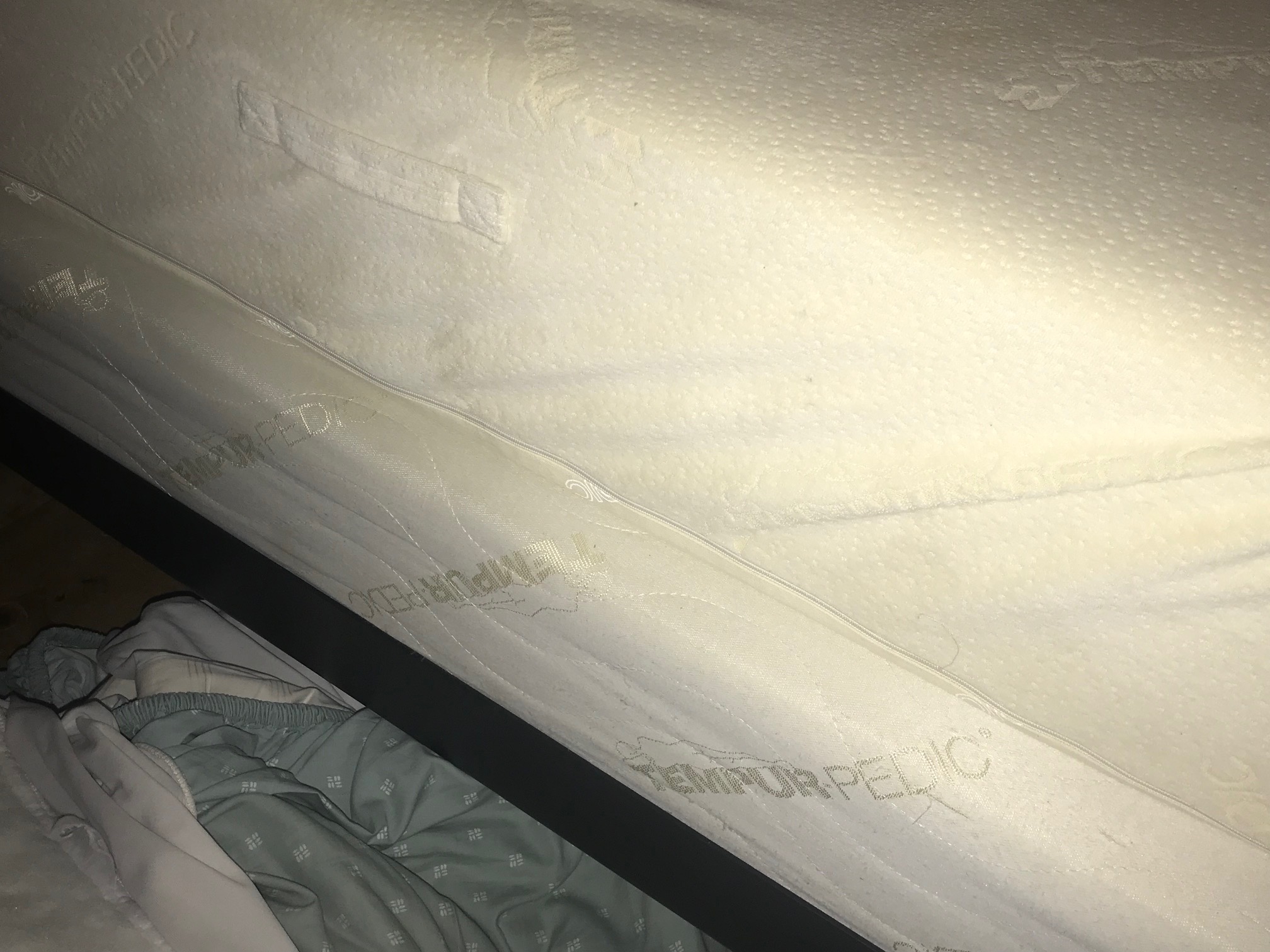
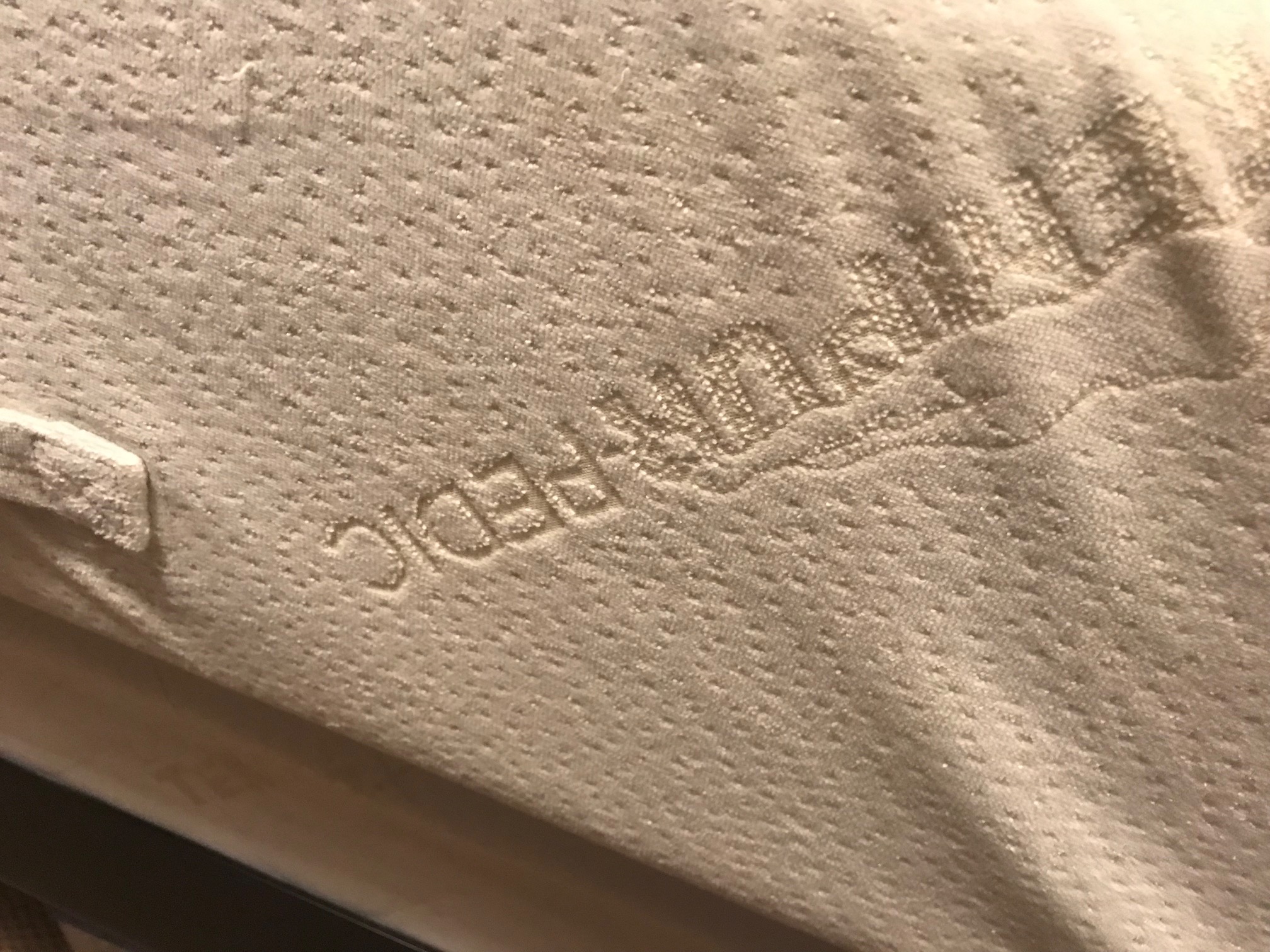
Never Miss an Important Article Again!
Join our Email List


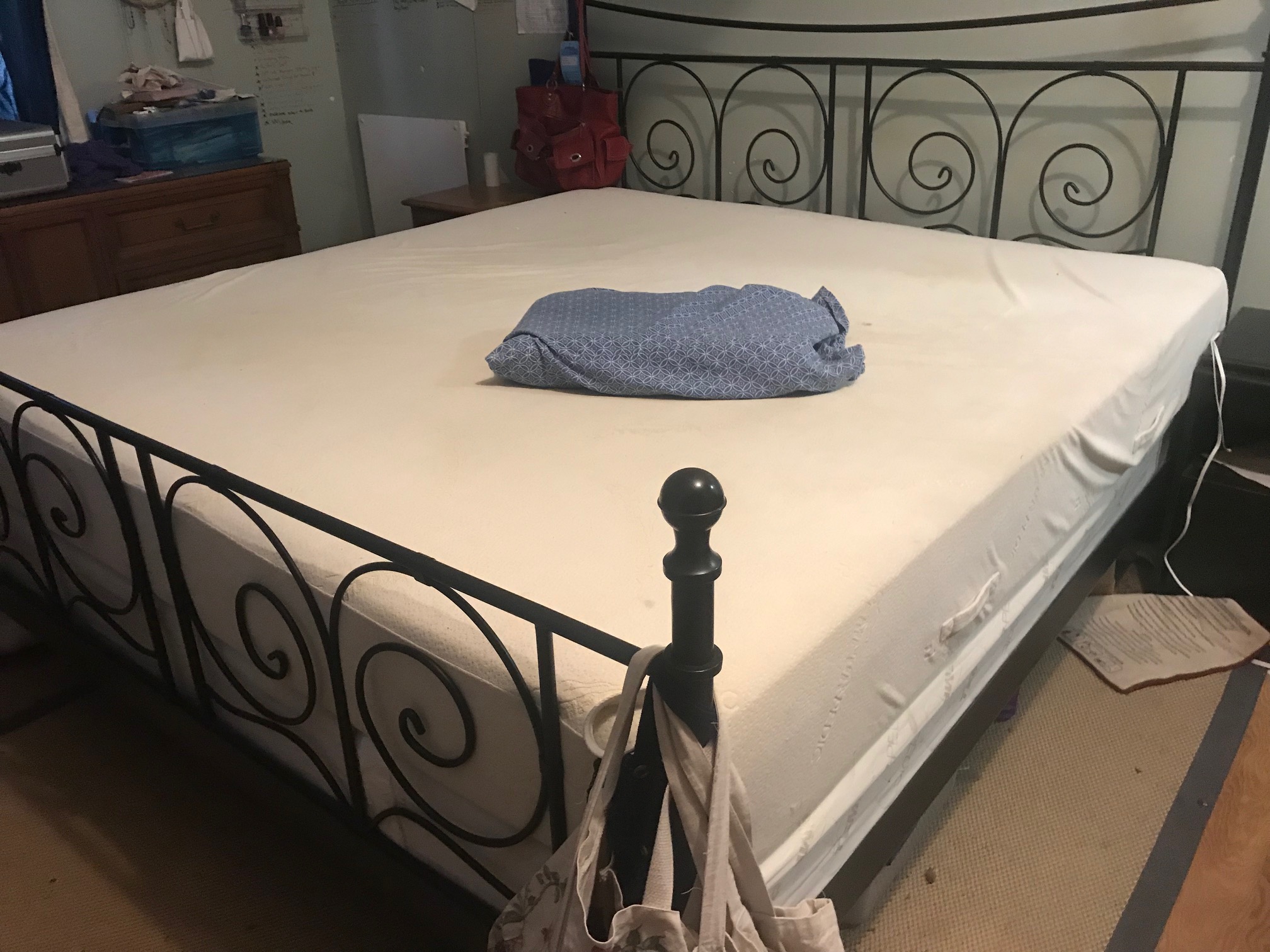
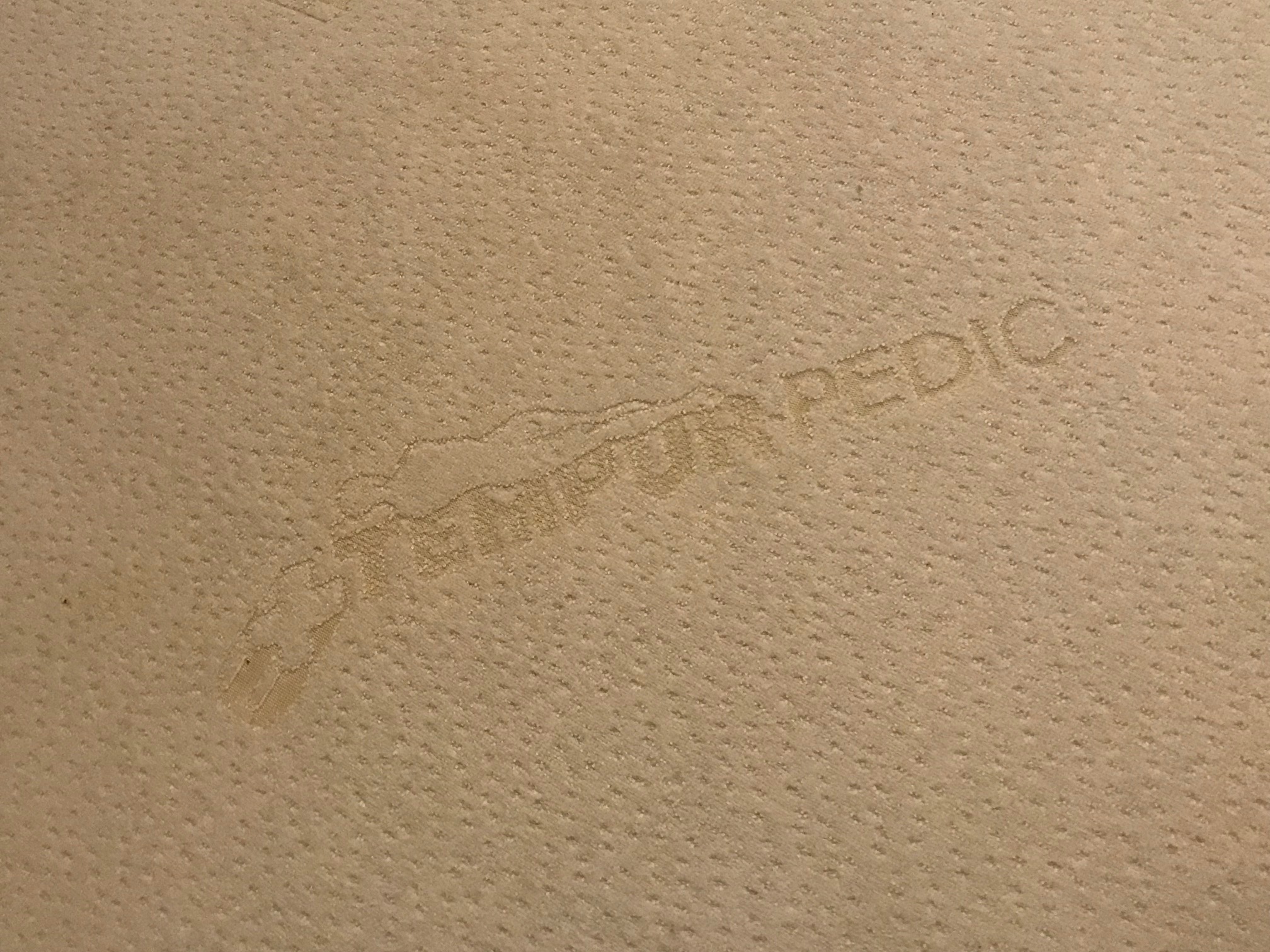
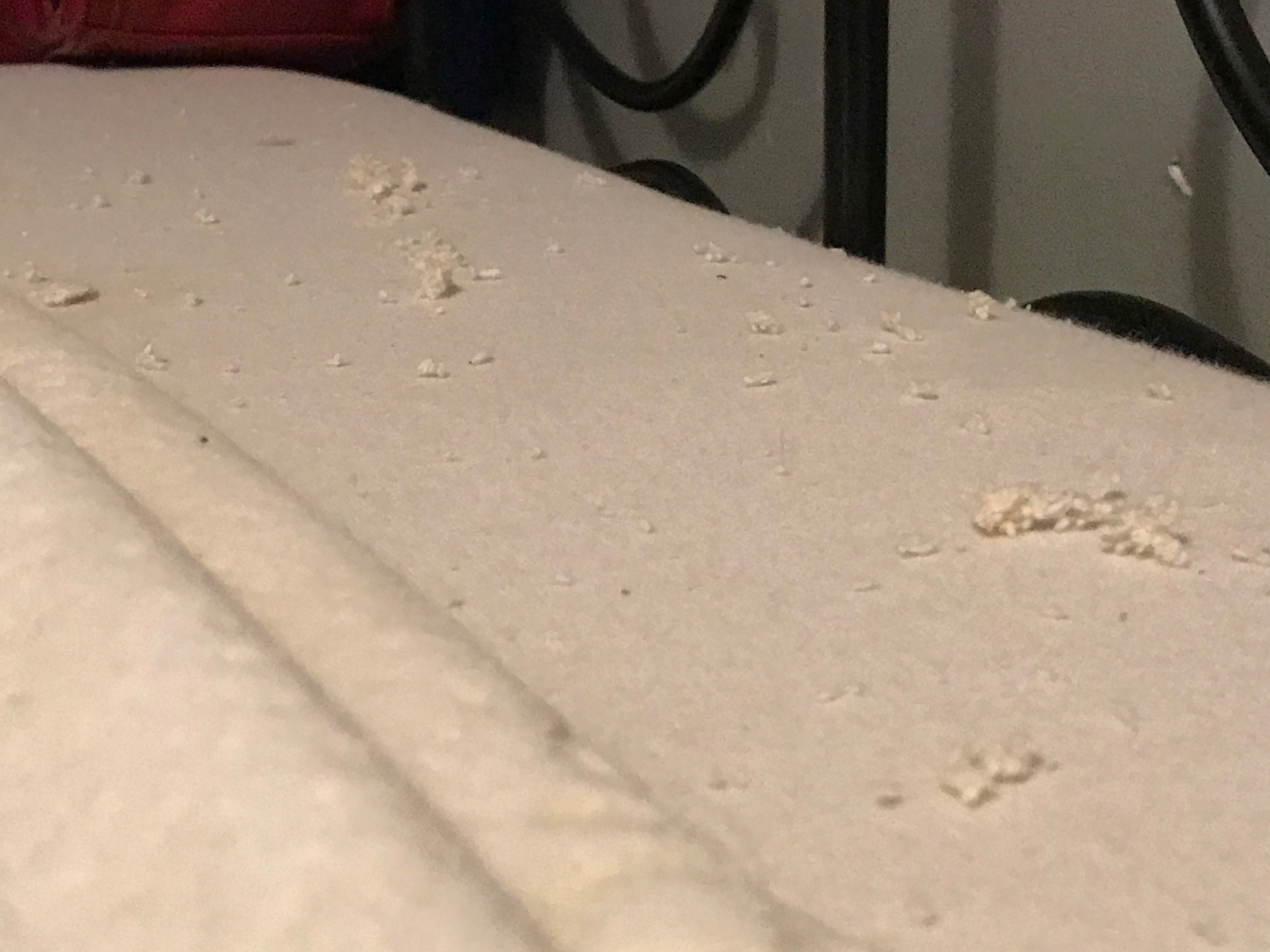 How much Antimony is “too much” Antimony?
How much Antimony is “too much” Antimony?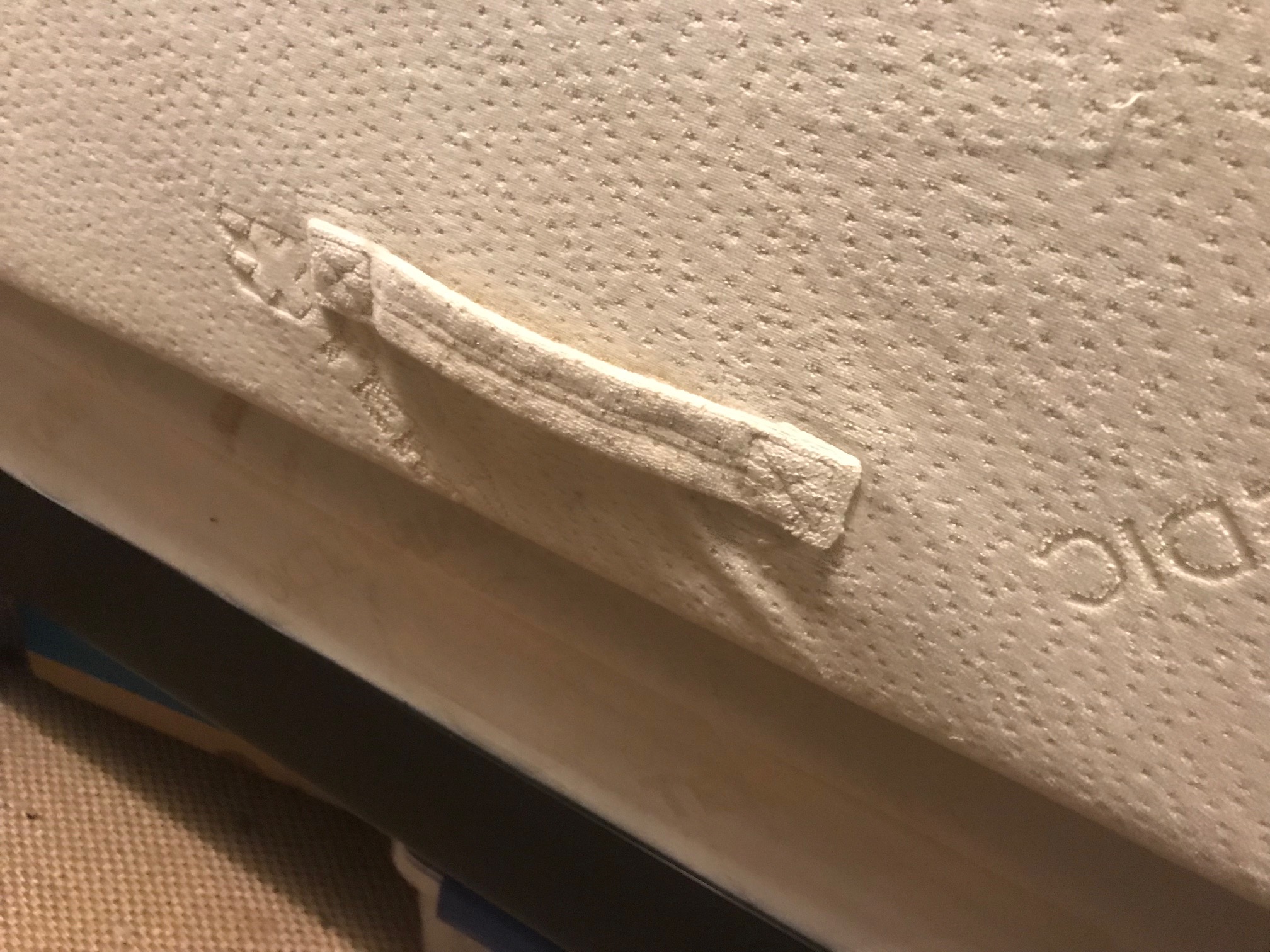

To whomever has slept on both mattresses or similar, which Naturepedic or similar, is as close to the same comfort level on bones as a firm Tempurpedic, but also hopefully not an oven? Also, can they be sealed up to last longer vs the Tempurpedic which says you probably should barely use a mattress pad? Makes me nervous, seeing that naked mattress when we wash the bedding. I vacuum it at the same time, to try to make up for it being unsealed, but all it would take is one brave stolen food filled old cat.
We have one organic cotton mattress pad, one organic cotton bottom sheet, then one thick linen bottom sheet, on our Tempurpedic. It’s still just so incredibly hot all the time by 2-3 a.m., even in ‘winter’. With the linen, which actually does help so much better than just cotton, it’s a bit more tolerable, but still.
Until they stop making hot nights, skin cells, allergies, or old cats that remove badly ingested things right where they are sleeping, I’ve never thought a sheet or two is enough mattress protection/barrier. In the summer we have to get up and go pace on cool tiles while letting the bed drop down to just uncomfortably warm. Unfortunately also so far the only mattress that doesn’t seem to hurt hip bones, or backs.
With the exception of a smaller foam mattress bought new from an unremembered shop after my parents married. Which lasted 40 total years of spaced out occupation before developing too many uneven/unsupported small dip spots on both sides. Strangely at the assorted hip heights of everyone who side sleeps. Ha. A mattress pad almost solves that mattress’s sleep problems. Also considering topping this smaller mattress (I see Naturepedic has toppers) if I can determine what it’s made of, besides vague lightweight, non-heat retaining ‘foam’. Or at least that is what my parent’s said it’s made of. I’ve never seen the actual mattress, too many encasement things.
The old mattress in encased in my parent’s style of mattress ‘Fort Knox’ plus thick wax sealed zippers, so getting at that mattress is going to be an ordeal. Maybe ‘Fort Knox’ makes the need to know irrelevant? Wishful thinking probably.
Suzanne! Thank you for this really great question. As soon as we have our Naturepedic king set up and installed I will let you know how it compares. We got one with two firmness levels (one for him and one for me.) I am just waiting on getting a new frame and will probably be sleeping on it by the end of the month (since I am traveling helping families until then.)
Tamara
Hi Tamara,
Just curious how the two compare, because we also have a Tempurpedic and looking to upgrade to a natural nontoxic option. Thanks!
Hello, thank you for your work and this write up, very interesting.
I’m wondering how your husbands numbers came back after his testing.
Thank you,.l
Mike
Thank you for your hard work uncovering all this. We just suffered a silent miscarriage and have really begun to look closer at our environment. We bought a temperpedic while I was pregnant with my 1st child 5 years ago. Since, I can’t count how many respiratory and sinus illnesses we have had over the last few years. My 4 year old son has a nasal polyp and at one point showed elevated lead, cadmium, and mercury levels. I now suspect that’s from the mattress as we co-sleep. I wish there was more research being done on the products we are being sold as safe for you. We are waiting our new Birch matress.
Thank you again for all this hard work. I was curious if you were able to check your husband’s heavy metals panel done?
I have been exposed to the foam in my tempurpedic matress for weeks. I’ve been deathly ill and no one could figure it out. When my dog started getting sick too I figured out it’s environmental and coming from the foam. I was finally tested for lead and arsenic yesterday and waiting on results and having a company come in to test air and foam.
I just purchased a tempur-pedic yesterday and have just fallen down this rabbit hole. I had no idea how toxic their mattresses were. Hopefully they will let me cancel before they deliver at 10 am tomorrow. Please let us know what your testing says. I co sleep with my 8 month old and would be completely disappointed in myself if I had let these toxins into his body…
I am loving your site. I got really sick from a toxic mattress. Antimony toxicity and who knows what else that really messed me up. Our TVOC in our hose with the mattress was 1.2 now without it is measuring .1. But getting these toxins out of me has been the real journey.
just ordered tempurpedic hybrid yet to be delivered and am now second-guessing. Where can i get the full story on their potential toxicity? What do you think of the
We have a water proof cover on our tempurpedic cloud mattress. We have had it 11 years. Would we have more protection since we have the waterproof barrier?
Please stop promoting wool products!!! Google “wool industry cruelty” to get an IDEA of how INHERENTLY cruel the wool industry is and how it drives and sustains the flesh industry. You also need to stop claiming that your husband is a “vegan” if he is using wool mattresses. If your husband has eliminated animal products only from his diet, he is NOT a vegan; he is a plant-based eater. Having said that, thank you very much for your educational work. I take the education you provide us with seriously and vote with my dollars by refusing to fund leaded products but you also need to your part by refusing to fund animal products.
What model is this TempurPedic?
I’m sorry – I don’t recall.
T
This information would’ve been helpful sooner for us. My husband is now classified as having Alzheimer’s because the ventricles of his brain are getting larger and the brain shrinking more than normal for his age.
In working with an integrative medicine doctor we found his arsenic and especially antimony levels to be off the charts. We have gotten rid of the the tempurpedic mattress and now have a saatva. I believe the antimony caused his mental decline.
Also I’m suffering from osteoporosis and too many fractures. Neither of our conditions are hereditary or genetic. Your information confirms my belief. Thank you for your research!
Thank you so much for commenting and for sharing your story.
– Tamara
Are there cheaper options besides Naturepedic? While I would love to purchase from them, it’s just jot in our budget right now. Thanks!
Hi Kris, did you ever find other options??? I don’t think we could afford a Naturepedic 🙁
Tamara, l recently bought a tempurpedic mattress for my daughters 4 yr. old. He sleeps with her now. It came with 2 free pillows and a mattress protector. This will be his grownup big boy bed. Now l’m sick because it isn’t safe so what shall l do. My OCD is kicking in please help.
Hi Linda – I haven’t tested the new ones. It’s possible they are safer – I would hope they are safer… I really don’t know though, because I don’t have any data points.
TT
How is your new mattress? Are ur arsenic levels significantly lower? Thx, sam
Hi Tamara, thank you so much for your investigative reporting and sharing your research. Curious if there has been increased regulation or understanding of antimony in products like Temper-pedic foam now in 2025.
We were always concerned about the off-gassing of problematic organic particles like benzene, (we always vented the room with outdoor air but now hard to do with wildfire smoke) but naively assumed that heavy metals like antimony would be looked at by regulators
Best,
Maggie
Looking to buy the dust wipes but I can’t find your article on if they worked on the mattress? Do you have those results?
There’s a video on our YouTube channel about that!
T